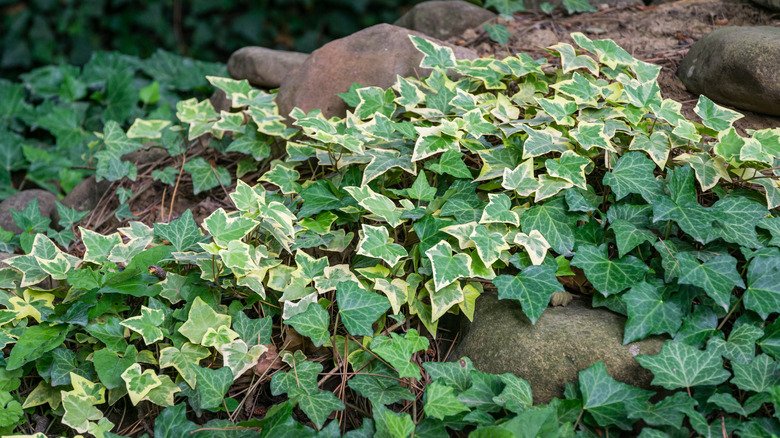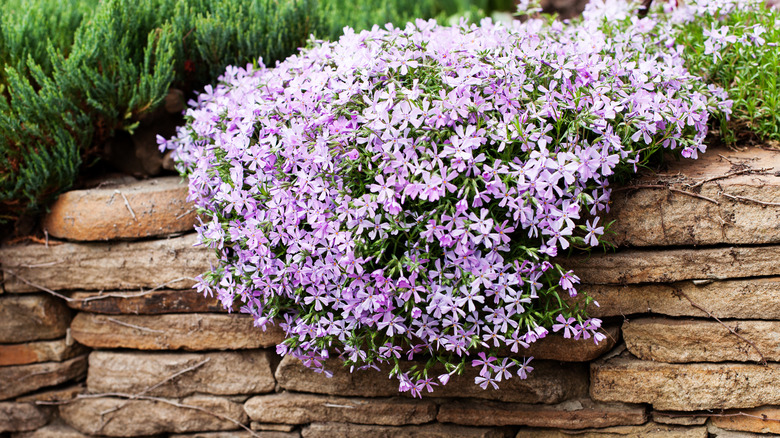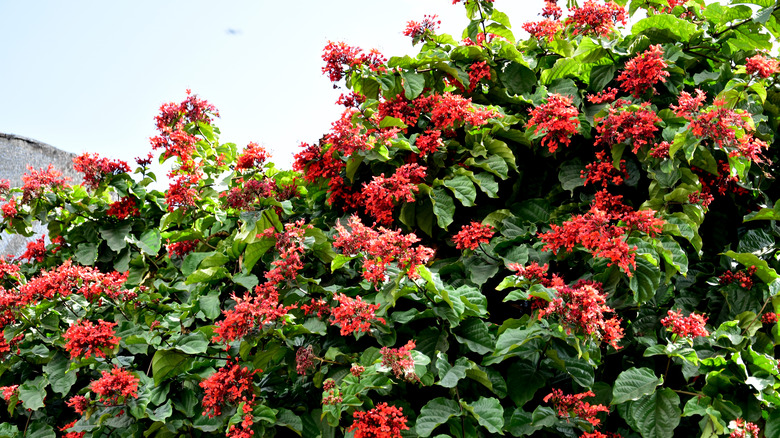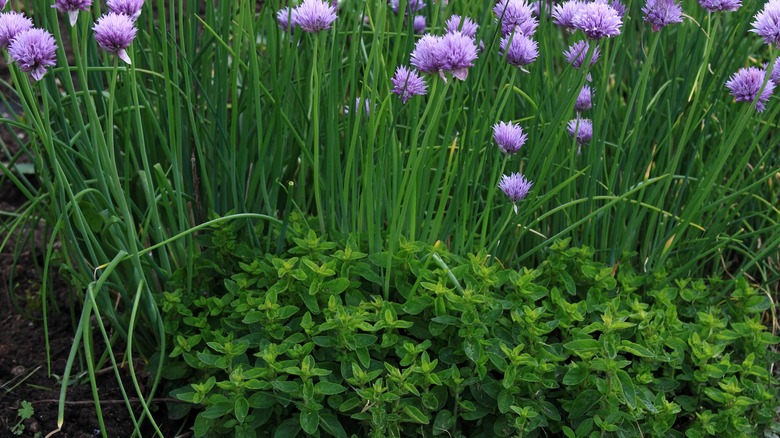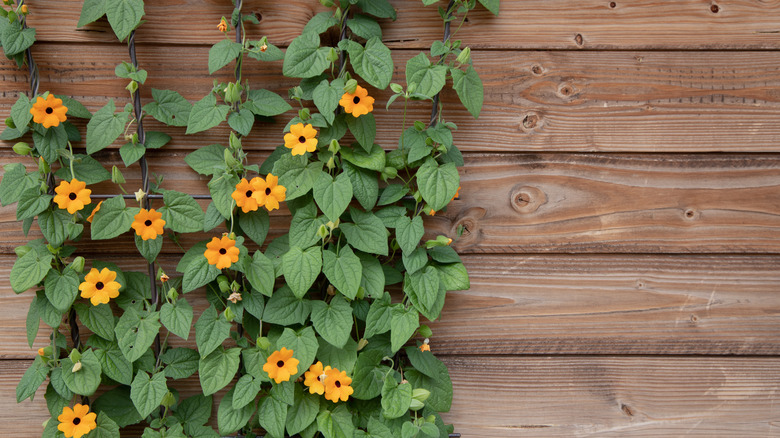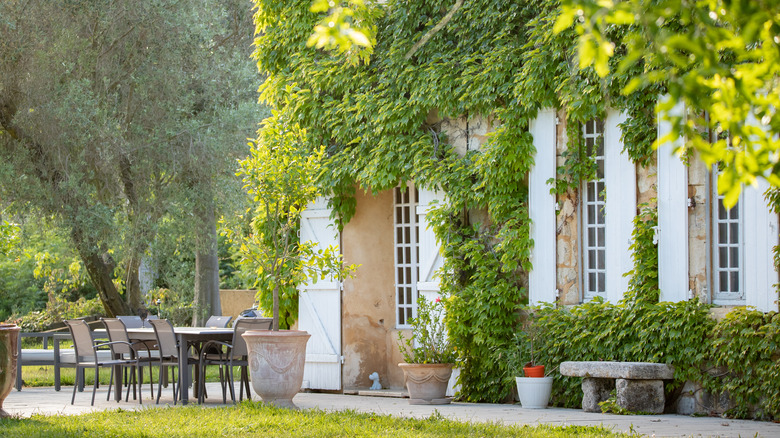Good Alternatives For Invasive English Ivy In Your Garden
If you're thinking of adding English ivy to your garden, you may be picturing beautiful antique British estates. With walls covered in ivy and a charmingly natural landscape, what you don't see in those dreamy homes is crumbling mortar from the tiny hooks this sprawling vine uses to climb the walls. You also don't see out-of-control English ivy overtaking and killing large shade trees. Once established, this invasive plant is almost impossible to irradicate, but there are plenty of options that can give you a similar look without taking over your garden.
The best alternative for English ivy depends on what purpose you want it to serve in your landscape. Do you want greenery that climbs over trellises? Are you looking for a ground cover to fill in the empty spaces in your landscape? Once you know what need you are trying to fill, you can find an alternative that is even better than English ivy, not only in beauty but for the ecosystem.
Creeping phlox
For those looking for an attractive ground cover that drips beautifully over retaining walls or raised beds, consider creeping phlox (Phlox stolonifera). To be completely honest, as a ground cover, English ivy doesn't even compare to this gorgeous mounding perennial. Creeping phlox starts blooming in late spring and offers a stunning display of delicate flowers for about a month. Available in white, purple, and pink hues, there is an option to match any color palette. Once the blooms have faded, this greenery features dense vines that add texture to any space.
Creeping phlox is hardy in zones 3 through 9, which means it is a perennial appropriate for all but the most tropical climates. This greenery is not only a good option in landscaping, but it is also an excellent choice if you have rocky soil or for sloped areas where you are trying to prevent erosion. Established plants are drought-tolerant and low-maintenance, and their blooms will attract all your favorite pollinators.
Coral honeysuckle
There are many differences between native honeysuckle and Japanese honeysuckle varieties. While the non-native option has a bush growth habit, coral honeysuckle (Lonicera sempervirens) is a native vine that produces lovely trumpet-shaped flowers. This perennial grows at a moderate rate, so while you may have to do some occasional trimming, you don't have to worry about it taking over your landscaped area. With vines that grow up to 20 feet long, coral honeysuckle is perfect for large trellises, archways, gazebos, or pergolas. Native honeysuckle comes in red or yellow options that bloom in clusters from spring through summer.
Like most native plants, coral honeysuckle is low-maintenance and drought-tolerant. If you want to support hummingbirds in your garden, this vine is a must-have. Those little flying torpedoes cannot resist the nectar from these gorgeous blooms. Coral honeysuckle is hardy from zones 6 to 9, preferring temperate climates. You do not need special soil conditions for this vine. It will grow in anything from sandy soils to dense clay.
Oregano
This alternative might seem a little unorthodox, but hear us out. Oregano is a dense ground cover that produces pretty little blooms in the summer. Most are familiar with this aromatic herb in the kitchen, but it's also super easy to grow. Oregano is a good option if you want to add ground cover between plants, but do not want something that will spread and take over your garden. This pretty herb offers dense growth with an attractive visual texture that stays green year-round in warmer climates. Place oregano between other plants in your landscape to increase interest and make the bed look fuller. This greenery grows up to 1 foot tall and 18 inches wide at maturity. It will reseed, but it is easy to divide every few years as needed.
Oregano can tolerate full sun to partial shade, so it's not too picky about lighting conditions. It can also tolerate consistently moist soil or moderate drought conditions. Perhaps the best thing about adding this herb as a ground cover is you can just pinch off as much as you need while you're making dinner.
Black-eyed Susan vine
Black-eyed Susans adorn roadside ditches as well as carefully manicured landscapes in the summer. We love the contrast of the dark center with their vibrant yellow petals. Less common than the standard flower is the black-eyed Susan vine (Thunbergia alata). Though they share a name and look similar, the vine is not actually related to the stemmed flower. If you're not quite ready to commit to a perennial but want something to cover a trellis or arch this year, consider black-eyed Susan vines. If you plant it this year and do not like it, you are only out the cost of a packet of seeds. For a big impact in a small space, grow black-eyed Susan flowers on the ground and some vines vertically. Now that would be a stunning display of blooms.
Plant seeds in the soil after the last chance of frost has passed and water well. These vines are pretty aggressive growers, so provide something on which they can climb as soon as they emerge from the ground. Expect bright blooms throughout the summer until the first frost. For an even more interesting display of color, mix these vines with morning glories or any bright flower arrangement, like zinnias.
Virginia creeper
Perhaps the native plant option with the most similar growth habit to English ivy is the Virginia creeper (Parthenocissus quinquefolia). This plant offers large leaves consisting of five leaflets. It is an aggressive grower, but as a native plant, it is not considered an invasive species. Like its English counterpart, however, it will take over homes and trees, as well as act as a dense ground cover. For sloped areas in dire need of erosion control, Virginia creeper might be the best option because it does grow so quickly. This vine produces dense roots that can help keep soil in place.
Virginia creeper grows in full shade and full sun conditions and is known for the color of its beautiful fall foliage. If you are considering planting this plant, you should be aware that some people are sensitive to the sap of Virginia creeper. Wearing long sleeves and gloves is the best way to protect yourself when you are pruning.
